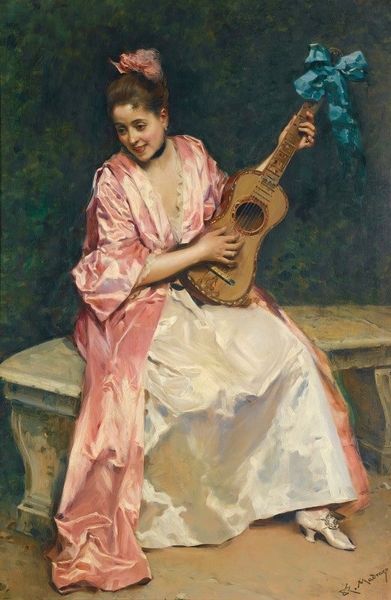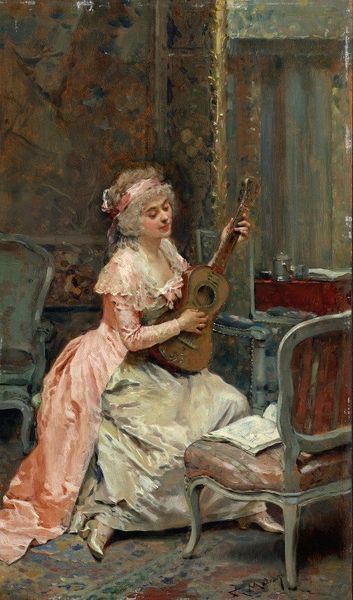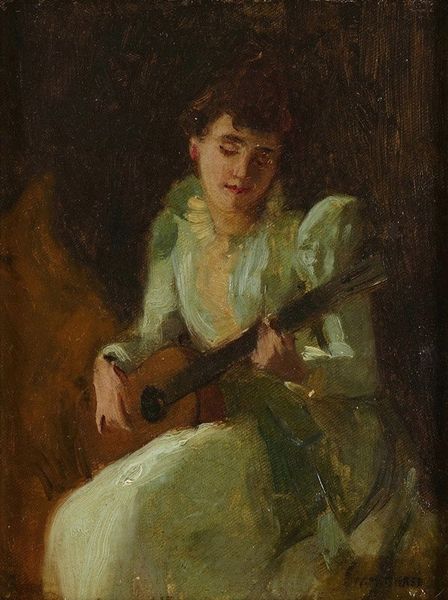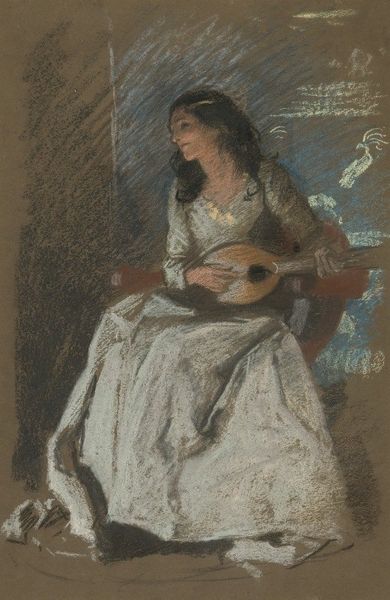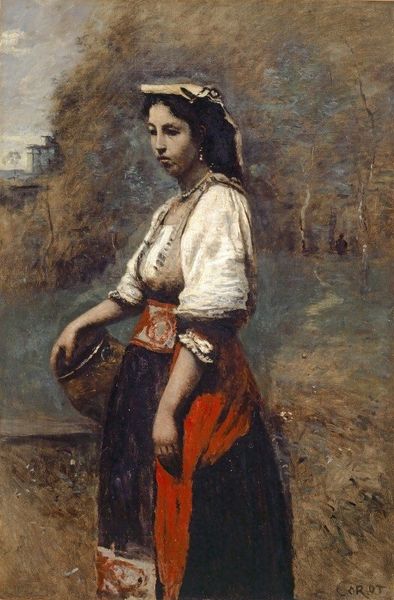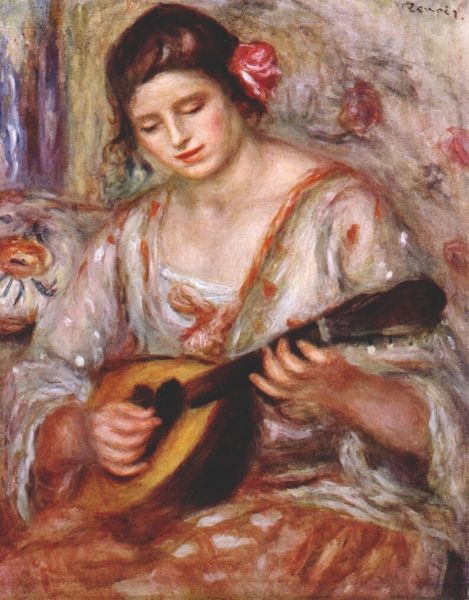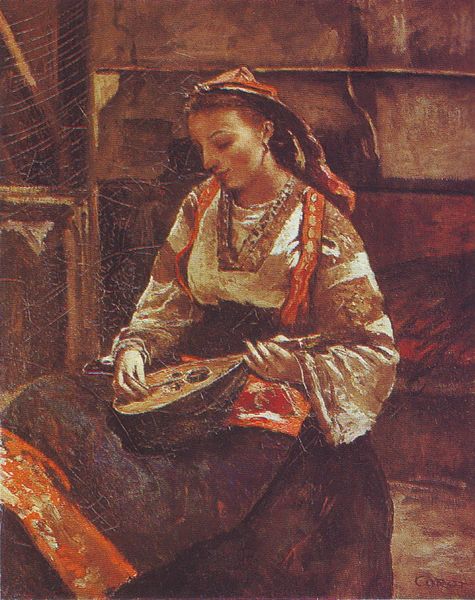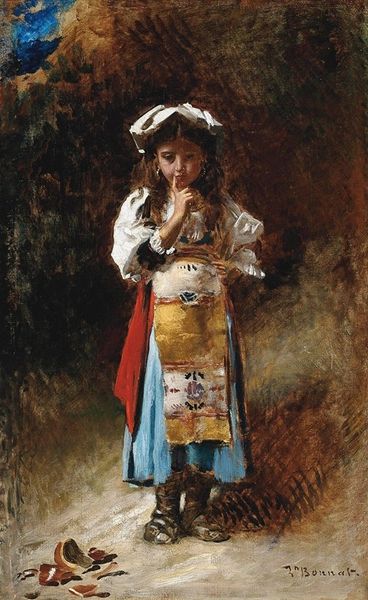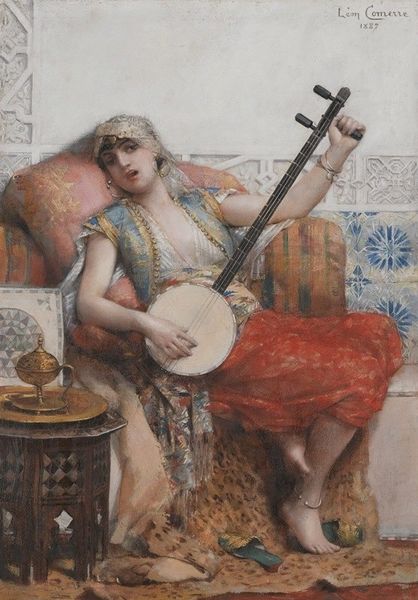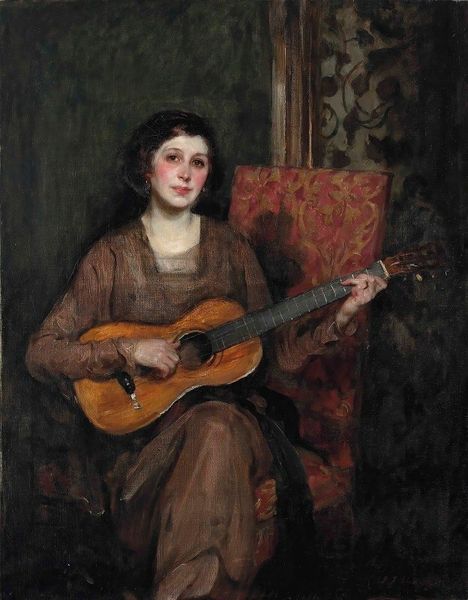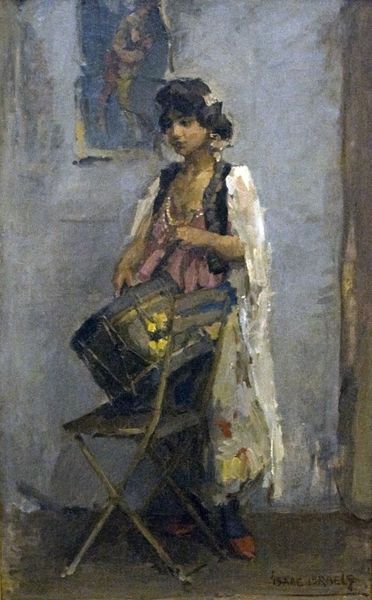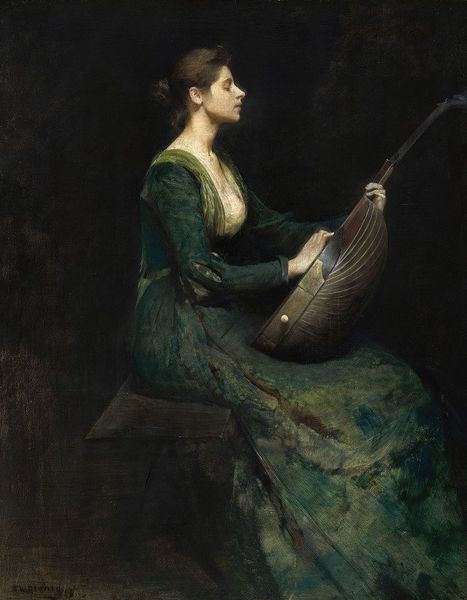
oil-paint
#
portrait
#
figurative
#
oil-paint
#
landscape
#
oil painting
#
romanticism
#
painting painterly
#
genre-painting
#
portrait art
Copyright: Public Domain: Artvee
Curator: Looking at Corot's "Young Girl with a Mandolin," painted in the 19th century, I am immediately struck by the subdued palette and the dreamy atmosphere. Editor: There's an undeniable melancholy about this piece. The girl's downcast eyes, the muted colors, they all suggest a profound sense of longing. Who is she? And what is her relation to the romantic symbol that is a mandolin? Curator: Corot often depicted figures in landscapes, blurring the lines between portraiture and genre painting. This young woman, gazing downward at her instrument, evokes a feeling of interiority, as if she’s lost in thought. He situates her both as object, and self-aware subject, complicating her personhood through gendered gazes. Editor: Indeed, the way she is framed, with the blurred landscape in the background, it all contributes to the feeling that we are witnessing a very private moment, one of emotional and possibly artistic vulnerability. It makes me wonder about the role of music, particularly within the artistic and cultural milieu of 19th-century Europe. What does that say of her aspirations? Curator: During the Romantic period, musical instruments were seen as extensions of the self, vehicles for expressing deep emotions. Her race, gender, class, all come into play and affect how we interpret both Corot’s view of women and of marginalized identities. The painting engages discourses around class and leisure, especially because she has the leisure time to own, learn, and play a musical instrument. Editor: This makes me think about the painting’s intended audience. Was this meant for a public display, perhaps to demonstrate Corot's mastery? Or was it a more intimate study? That’s one way artistic movements reinforce and challenge class boundaries, too. Curator: Understanding the historical context surrounding the painting allows us to consider the complex narratives of identity, gender, and social status that were so central to the 19th-century experience. We, as spectators, reflect on those aspects in ourselves, too, through this artwork. Editor: Exactly, thinking about the history of its creation, the social dynamics and potential motivations helps illuminate not only Corot’s technique, but it raises more challenging questions about spectatorship itself. Curator: Right, thank you. Editor: Thanks.
Comments
No comments
Be the first to comment and join the conversation on the ultimate creative platform.
